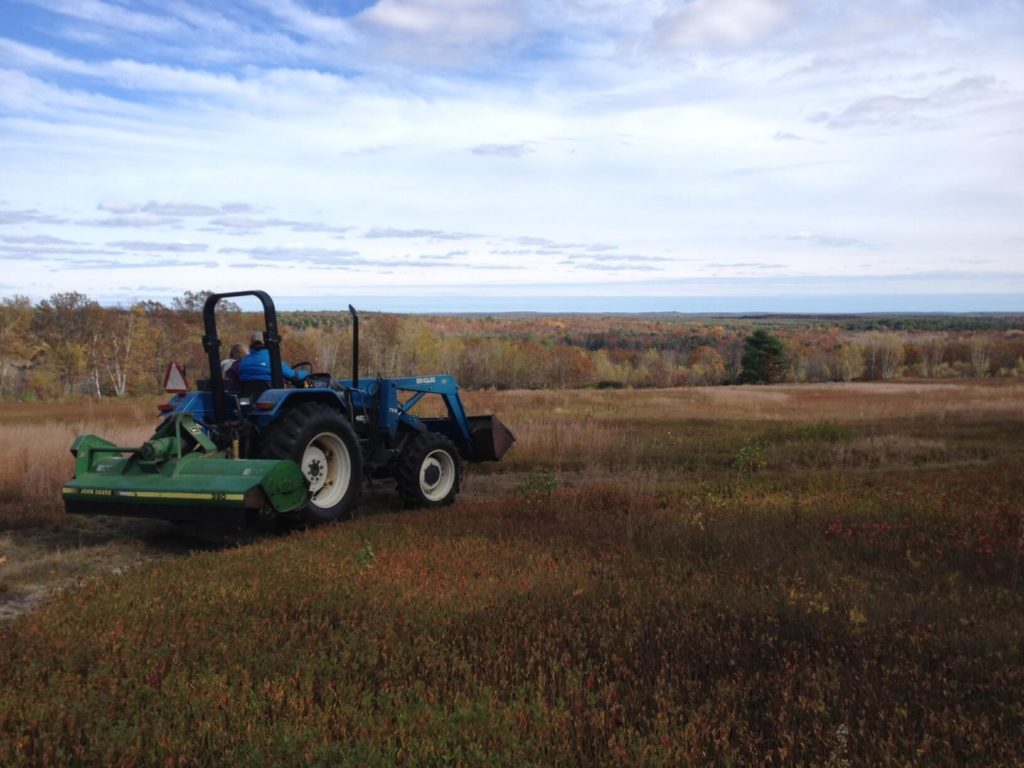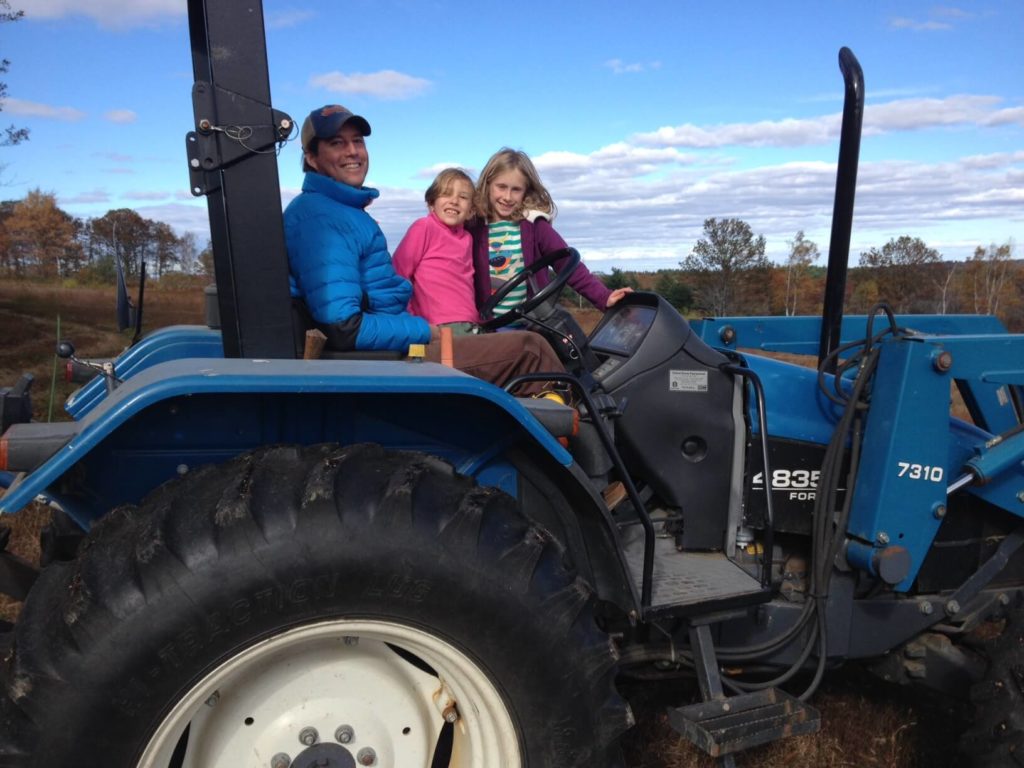Putting A Wild Blueberry Barren to Bed for Winter
For Jesse and Stella Field, the end of the season is a quiet time of year…
On a clear, windswept day from Fields Fields Wild Blueberry Barren you can see the green Camden Hills to the East and the snowcapped Presidential Range the West. Fields Fields, a family owned and operated Wild Blueberry Barren, sits at a modest elevation of 438 feet but it has the distinction of being the highest point in Lincoln County, Maine, so it enjoys breathtaking views in all directions.

Jesse Field and his 7-year-old daughter, Stella, are second and third generation Wild Blueberry growers who tend the 50 acre farm. Jesse’s parents bought the farm in 1974 and established a homestead there so they could live in keeping with their values. They grew apple and pear trees, grapes, lots of vegetables, and raised chickens and small farm animals.
“In the early years, it was more of a homestead and the blueberries were a nice bonus,” says Jesse. Today, the Wild Blueberries are a fundamental part of the farm, and a good source of income too. Last summer, the Fields harvested close to 20,000 pounds of organic Wild Blueberries from their land, which they delivered to Merrill Blueberry Farm in Ellsworth, where they were quickly frozen, boxed and made ready for market.
Once the harvest is completed and the crop sold, the Fields transition from high intensity production to a slower pace of life. We spent a day visiting Fields Fields to walk the land and speak with Jesse and Stella about putting their barrens to bed for the season.

What’s it like this time of year on the barrens?
It is quiet now on the barrens. We completed the mowing last month and took time to pull weeds – especially the baby birch trees that like to come up in the fields. Getting the weeds’ root structures out of the ground is important. We do it in the fall and again in the spring when the frost is coming out of the ground.
What are some of the activities involved with closing down for the season?
After the harvest, we spend a good amount of time cleaning equipment and putting it away so it’s ready for next year. In the fall, we spend time mowing the fields. Depending on the weather and the conditions, we may mow and burn. We follow a two-year crop management cycle, which means we mow or burn half of our acreage each year and leave the other half alone.
What are the advantages of burning?
The Native Americans burned the Wild Blueberry fields because it was easy and the fire did the work. Burning is really the most elegant way to manage the fields, especially if the conditions are right. The Native Americans didn’t have mowers and clippers like we have today. Burning kills insects and it helps control fungus and other pests that can lay dormant in the field.
When does the burning take place?
Burning is done anytime between now and April. If we get a decent spring, with some dry weather and not a lot of wind, we usually do a burn with whatever tinder materials are available on the field. In years past we spread straw as a way to encourage a good burn, but at $4 a bale, hay is an expensive way to burn a field, so we look for other natural materials. We touch it off with a propane flame and let the fire creep slowly across the ground. The conditions have to be just right though – dry weather with no wind.
What’s the most important thing you can do to ensure a good crop next year?
First of all checking the soil health and the pH levels of the soil. Blueberries thrive in lower pH (high acidity) soils. Keeping the pH levels right helps us mange competing plant species and also creates conditions that favor the Wild Blueberries, letting them be the healthiest they can be. Then it’s the weeding. The berries pretty much do their own thing, particularly at his time of year. They are a pretty hardy and amazing crop.
How long has your family owned the farm?
My parents started farming here 40 years ago. It was 1974. They bought the farm and built the house, and raised two kids here.
What’s it like to teach a young daughter about farming?
Well, I really enjoyed growing up here as a kid and it has been awesome to watch my daughter get to know this land. It’s really important for me to let her learn about where food comes from, how it’s grown, and what it takes to care for land and cultivate things. She now has an understanding of the value, responsibility and stewardship aspects of farming. Those are really important values that seem to be lost on the greater population today.
Does Stella like the farm?
She loves the farm. During the harvest, she gets all-you-can-eat Wild Blueberries. During the other seasons she walks the land, looks at fossils in the rocks, takes tractor rides, and enjoy the fruits of our labor.

